The difference between G1 and G2 coffee beans introduced what is the coffee grading system in Ethiopia
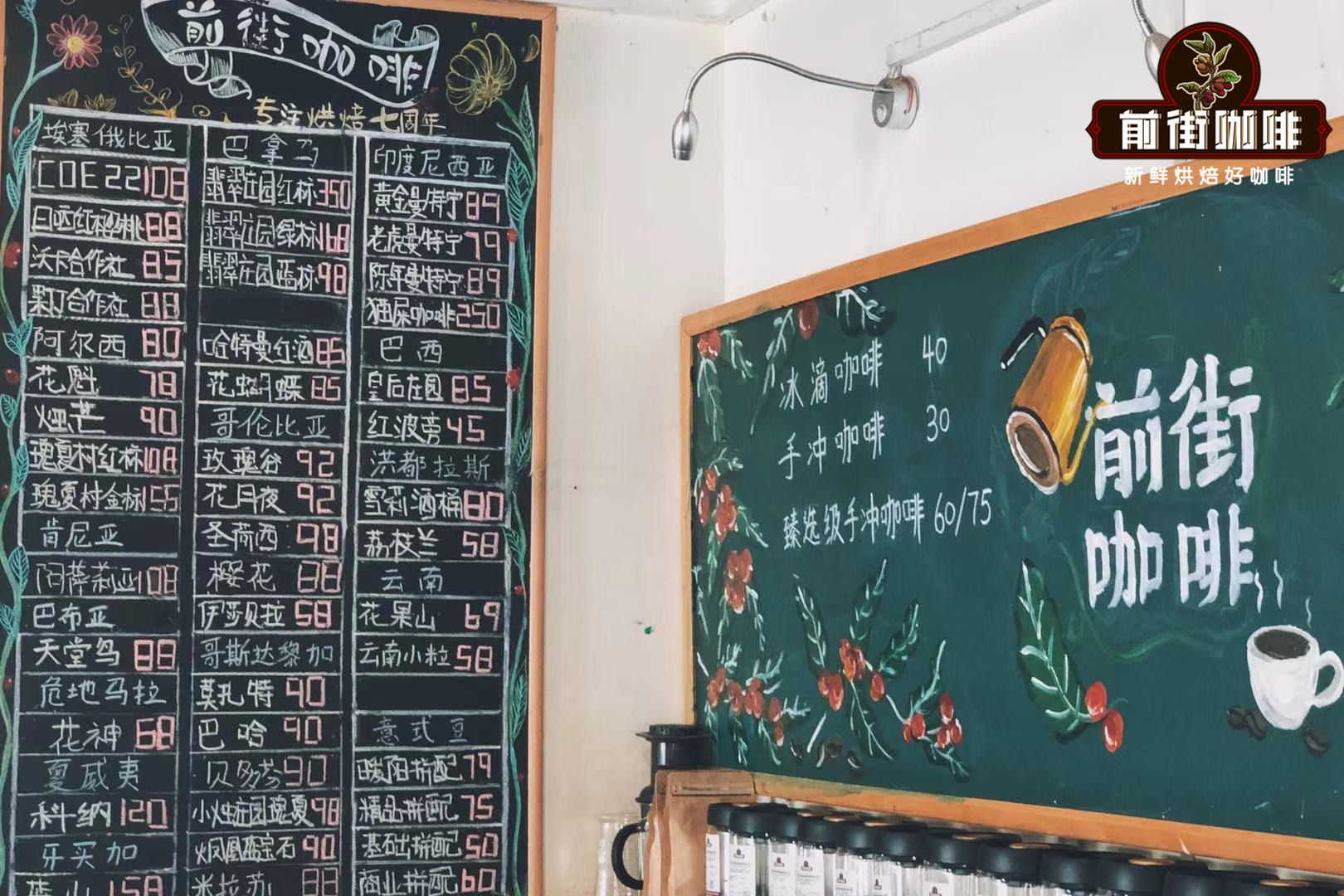
Professional coffee knowledge exchange more coffee bean information please follow the coffee workshop (Wechat official account cafe_style)
Yega Xuefei is a very famous coffee producing area in Ethiopia. The coffee beans that are easy to come into contact with in our daily life are Yega Sheffield G1 coffee beans and Yega Sheffield G2 coffee beans. So what's the difference between G1 and G2? Which is better? In fact, these numbers come from Ethiopia's coffee grading system. Qianjie Coffee is here to evaluate the flavor difference between G1s and G2s.
Grading of Ethiopian coffee beans
First of all, the Ethiopian Ministry of Agriculture has a department called CLU (Cupping and Liquoring Unit), which is responsible for the quality approval of exported coffee, which includes the very important responsibility of grade definition; CLU existed before ECX.
Before the advent of ECX, for washed coffee, the export grade was G1 and G2; for sun-cured coffee, the export level was G3, G4, G4, G5, which means that the highest level of sun exposure was G3.
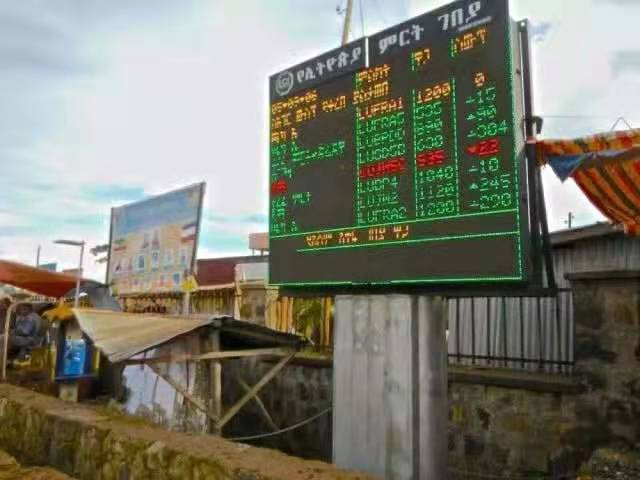
After the emergence of ECX, there is a redefinition of classification, and there is no difference in the classification name of washing, while the definition of sunlight appears for the first time G1, which is why Esser's sunburn is G1 and G2, while G3 begins to decrease slowly.
Ethiopia's old grading method was simply classified according to the number of defects. The highest grade of beans washed with water was Grade 1-G1 and the highest grade of sunlight was Grade 3-G3. The current grading method is based on the combination of physical attribute characteristics and cup flavor characteristics established by ECX.
All coffee is defined as three types according to the way it is treated, insolated or washed:
A. Speciality (washed & unwashed): the number of defects is small, and the cup test has high flavor quality.
B. Commerical (washed & unwashed): not up to the boutique level, but higher than the domestic consumption grade
C. Local / Domestic (washed & unwashed): coffee with a large number of defects (unripe beans), out of season and poor storage.
Among them, Specialty and Commerical are aimed at the international export market, and Local is the coffee sold for the domestic market.
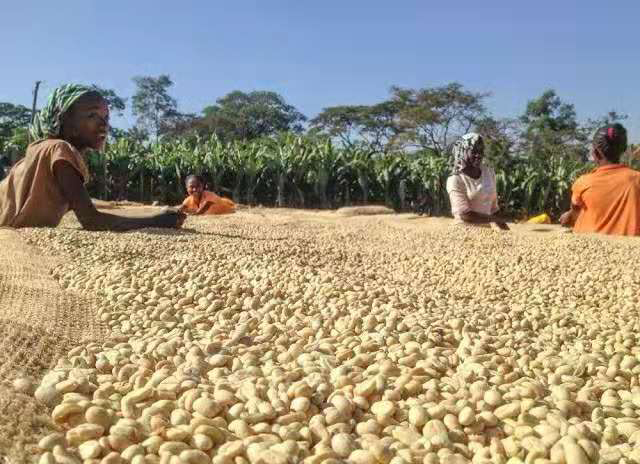
The specific grading and scoring criteria of ECX are as follows:
a. Score definition of washing treatment method
1. Physical characteristics account for 40%: number of defects (20%), appearance size (10%), color (5%), smell (5%).
2. 60% of the cup quality: cleanliness (15%), acidity (15%), taste (15%), flavor characteristics (15%).
b. Score definition of solarization treatment
1. Physical characteristics account for 40%: number of defects (30%), odor (10%)
2. 60% of the cup quality: cleanliness (15%), acidity (15%), taste (15%), flavor characteristics (15%).
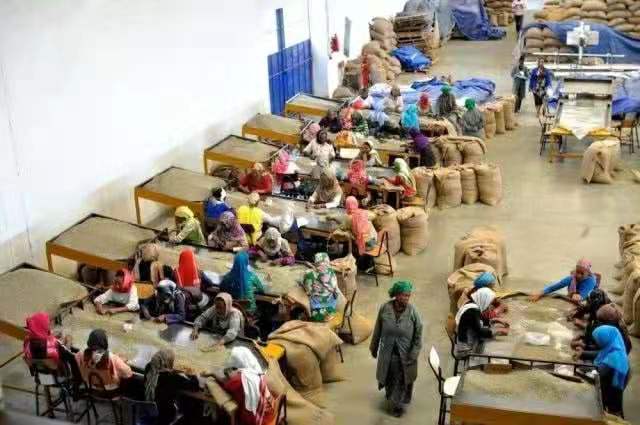
c. Overall summary:
1. According to the method of treatment, all coffee is classified as: sun exposure, water washing.
two。 Each scored 9 grades of G1-G9 according to physical characteristics and cup test basic quality.
3. The G1-G3 was tested again according to the SCAA standard, and its flavor properties were evaluated in more detail, and the G1 and G2 with no less than 85 points were rated as Q1.
4. It is rated as Q2 for G1meng G2 G3 between 80 and 85, and G3 for all G1 Magi G2 G3 with scores below 80.
5. Q1 and Q2 are classified as Specialty Grade exports. G4-G9 kept the original grade unchanged and was classified as CommercialGrade export together with G3.
Washed beans Grade1 represents 3 defective beans per 300g of raw beans; Grade2 represents 12 defective beans per 300g of defective beans. Of course, in fact, the standards of defective beans between sellers and buyers must be a little different (otherwise, why else can we pick out so many defective beans? ), but the comparison of defect rates is still easy to tell. The defective beans in the G1 are significantly less than those in the G2, which means that, excluding the effects of specific flavor and roasting, Ethiopian G1 coffee beans are of higher quality and higher score than G2 coffee beans, at least clearly distinguishable in terms of defective flavor.
Therefore, the biggest difference between G1 and G2 at present lies in the difference between defect rate and cup test score. The defect rate of G1 is lower than that of G2, and the cup test score is naturally higher than G2. But now there is a situation where the defect rate has reached the G1 standard, but if the cup test score does not reach the G1 level (less than 91 points), it will be reduced to the G2 level.
Appearance comparison
So let's compare the difference between Yega Xuefei G1 and G2, and first take a look at the appearance of raw beans. In fact, regardless of size and shape, the appearance of G1 and G2 are very similar, while G2 is easier to find defective beans such as moth-eaten beans.
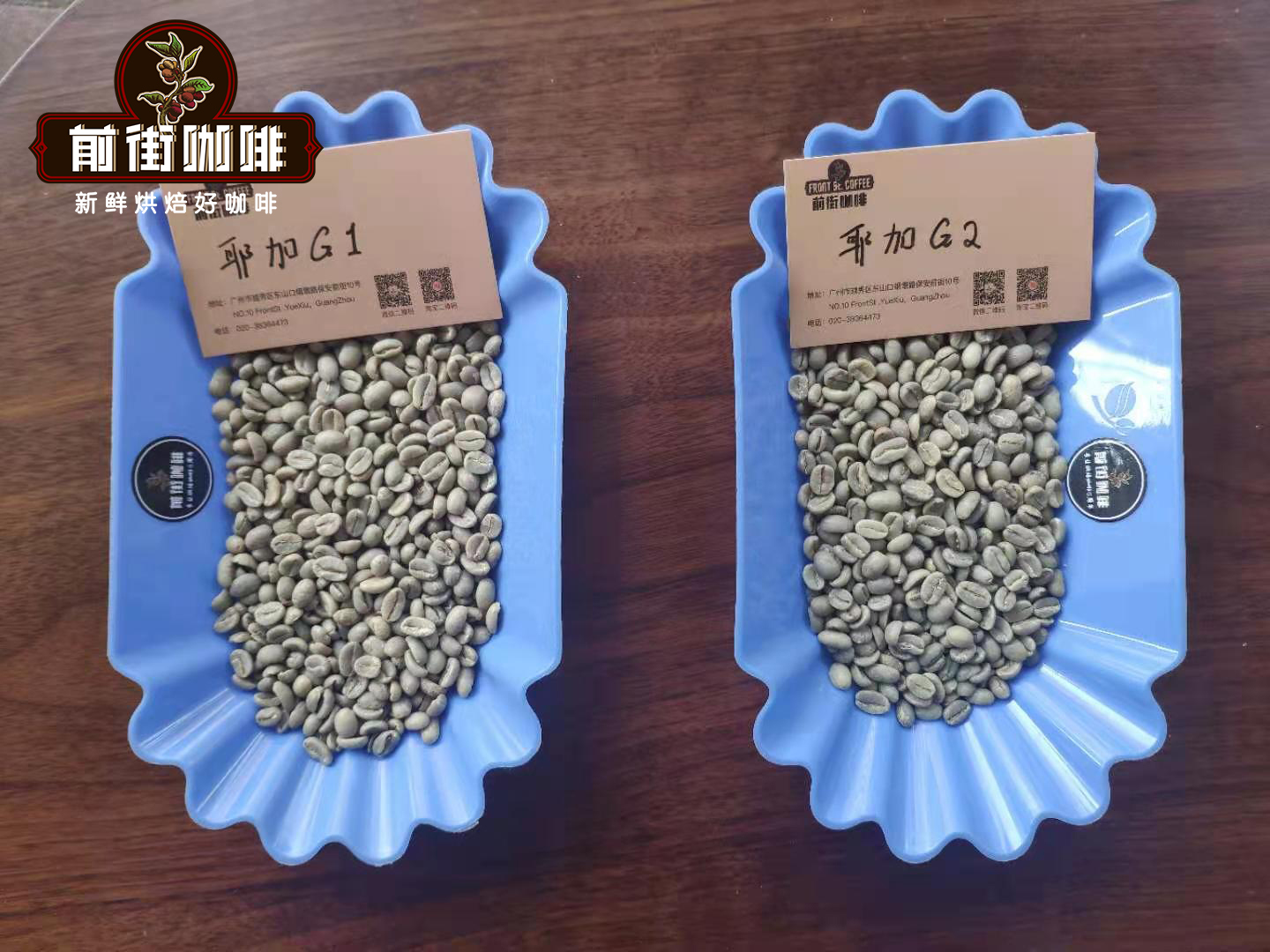
Then observe the appearance of cooked beans of Yega Chuefei Coffee G1 and G2. In fact, there is no difference at all, because Qianjie will manually screen defective beans before and after baking. Therefore, there is little difference in the appearance characteristics of Yega Chuefei coffee, which is graded by defect rate.
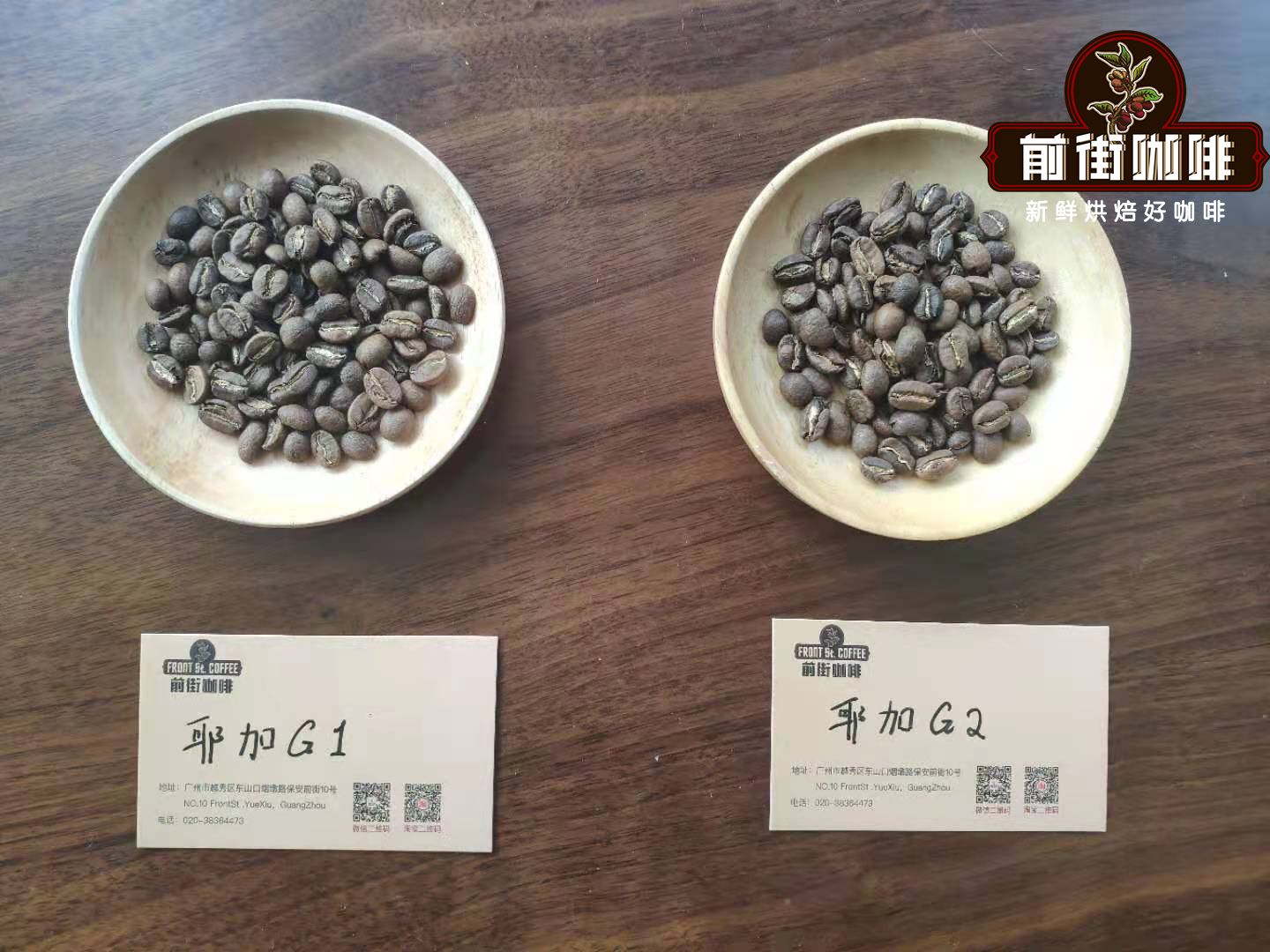
Flavor comparison
Then make a cup test comparison, through the cup test of these two kinds of water-washed Yega Xuefei G1 and G2, we get the following results:
Both G1 and G2 have citrus, tea, honey and berry flavors. The difference is that G1 is cleaner and more recognizable, while G2 is a little light and slightly cloudy. The G1 is slightly better in terms of sweetness.
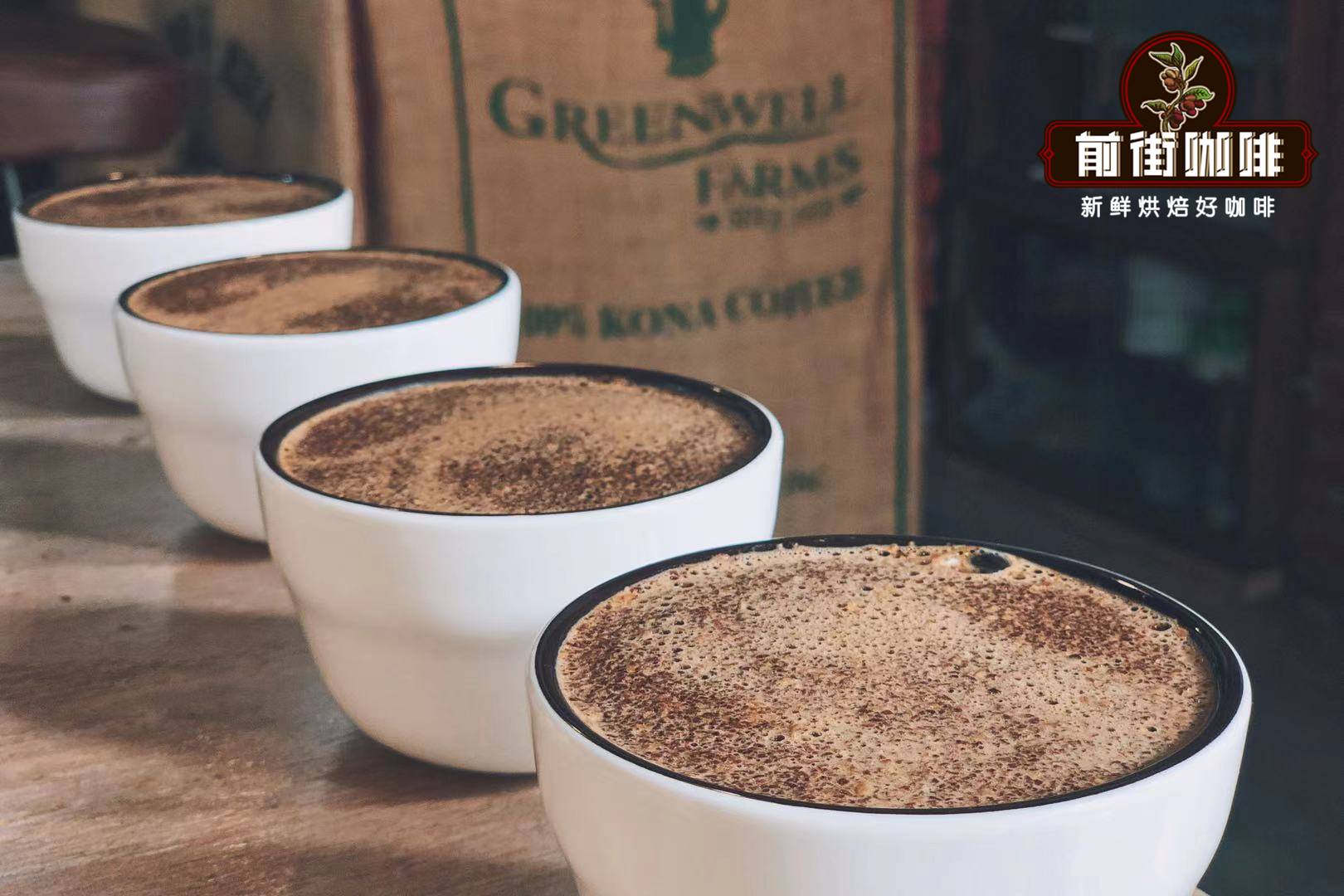
For more boutique coffee beans, please add private Qianjie coffee on Wechat. WeChat account: kaixinguoguo0925
Important Notice :
前街咖啡 FrontStreet Coffee has moved to new addredd:
FrontStreet Coffee Address: 315,Donghua East Road,GuangZhou
Tel:020 38364473
- Prev

Introduction to the method of taste treatment for describing the flavor of sunny Sidamo coffee
Sidamo coffee flavor description characteristics taste treatment product name: Sidamo producing area: Africa Ethiopia Sidamo Ethiopia is a very important coffee exporter in the world, the main producing areas are Sidamo, Yegashifi, Cochel, Hara, Jima and so on. Sidamo is a major producing area of boutique beans, with excellent fruit characteristics and meticulous coffee beans.
- Next

An introduction to the annual harvest season output of Yejiaxuefei coffee
Yega Chuefei annual harvest season output of Yega Chuefei coffee Yirgacheffe, roasted in low heat for 17 minutes (230C), turn off the fire and glide for half a minute, immediately cool the beans and blow off the silver skin, there is a slight oil on the surface of the coffee beans, the beans are black and brown. The beans are very light, and the resistance is very high when using hand coffee grinding.
Related
- Detailed explanation of Jadeite planting Land in Panamanian Jadeite Manor introduction to the grading system of Jadeite competitive bidding, Red bid, Green bid and Rose Summer
- Story of Coffee planting in Brenka region of Costa Rica Stonehenge Manor anaerobic heavy honey treatment of flavor mouth
- What's on the barrel of Blue Mountain Coffee beans?
- Can American coffee also pull flowers? How to use hot American style to pull out a good-looking pattern?
- Can you make a cold extract with coffee beans? What is the right proportion for cold-extracted coffee formula?
- Indonesian PWN Gold Mandrine Coffee Origin Features Flavor How to Chong? Mandolin coffee is American.
- A brief introduction to the flavor characteristics of Brazilian yellow bourbon coffee beans
- What is the effect of different water quality on the flavor of cold-extracted coffee? What kind of water is best for brewing coffee?
- Why do you think of Rose Summer whenever you mention Panamanian coffee?
- Introduction to the characteristics of authentic blue mountain coffee bean producing areas? What is the CIB Coffee Authority in Jamaica?

